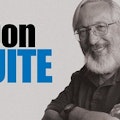The “Half-Watt Standby” requirement for plug-in ac-dc power supplies has been a requirement—first in California’s CEC400 energy efficiency standard and then as part of Energy Star—for almost a decade. When a “wall wart” is plugged in, but the device it is powering is not turned on, the ac-dc supply must not consume more than 500 mW.
This file type includes high resolution graphics and schematics when applicable.
That’s still a challenge in LED lighting that uses a dimmer to control brightness by means of a ZigBee, Bluetooth, or Wi-Fi link. “Half-Watt Standby” implies that, even when the LED bulb is dark, the supply for the LED driver and radio receiver cannot consume more than 500 mW.
Marvell meets these standards with the compact 88EM8189 single-stage, constant current, intelligent LED controller (with an integrated I2C-compatible interface) and the 88MZ100 ZigBee microcontroller, which interfaces with the 88EM8189. The ac-dc supply for wireless functionality is built into the dimmer.
The 88EM8189 includes an energy-efficient on-chip supply for the ZigBee IC, which implements the wireless aspect of dimming. In fact, many wireless or wired controllers could be used with the 88EM8189, as long as they have an I2C interface. The 88EM8189 can be used in buck-boost (non-isolated) or flyback design topologies (see the figure).
About the Author

Don Tuite
Don Tuite (retired) writes about Analog and Power issues for Electronic Design’s magazine and website. He has a BSEE and an M.S in Technical Communication, and has worked for companies in aerospace, broadcasting, test equipment, semiconductors, publishing, and media relations, focusing on developing insights that link technology, business, and communications. Don is also a ham radio operator (NR7X), private pilot, and motorcycle rider, and he’s not half bad on the 5-string banjo.


